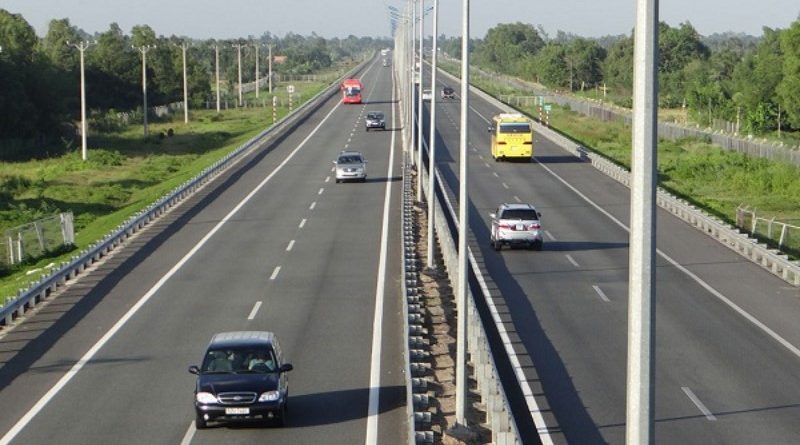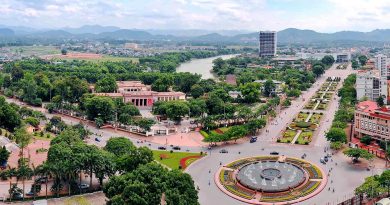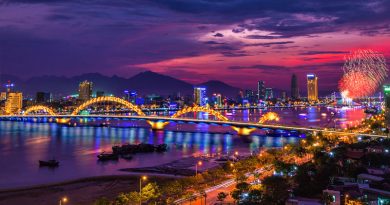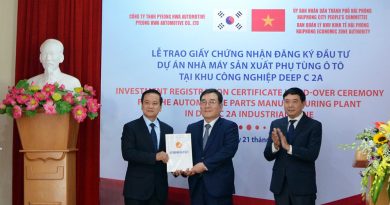FDI needed in infrastructure development
From a low starting point, Vietnam’s infrastructure system has been improved significantly. However, quality is still a persistent issue, causing a bottleneck limiting economic development, making it necessary to focus FDI capital in this sector.
According to WEF’s Global Competitiveness Report 2017-2018, Vietnam’s competitiveness currently ranks 55th out of 137 countries, five steps higher compared to last year and 20 places higher than five years ago. As many as ten out of 12 indicators have been improved.
In the report, Vietnam’s infrastructural development indicator ranks 79th among 137 countries, which is still considered weak despite improvements in the past many years.
Vietnam has been working to innovate the system for over 30 years and obtained several socio-economic development achievements, but there are sign of slowing growth, causing difficulties to overcome the middle-income trap. High-cost and low-efficiency investment do not attract foreign capital in key large-scale projects, which challenges the countries aims to reach sustainable economic growth.
“The Vietnamese government determined that infrastructure development is an important task and set it among the three breakthroughs in the socio-economic development strategy for the 2011-2020 period,” noted Deputy Minister of Planning and Investment Nguyen Van Hieu at the Workshop on Vietnam-World Economic Forum (WEF) infrastructure development co-operation on November 16, 2017.
They need approximately $132 billion to meet Vietnam’s infrastructural development demand by 2030 (excluding high-speed railways), while the 2016-2020 mid-term state budget allocated VND150 trillion ($6.6 billion) for this sector.
Thereby, attracting non-state and private resources into infrastructure projects is the best choice now, especially in the form of public-private partnership (PPP).
As a result, the Vietnamese government signed a bilateral co-operation agreement with WEF on “Developing a self-reliant Vietnamese economy” in seven sectors of co-operation, including the “Future of long-term investment, infrastructure and development,” established a Vietnam Infrastructure Working Group (IWG), and a community of leaders, businesses, and scholars for initiative sharing.
This is an opportunity for Vietnam to research and learn other countries’ experiences as well as attract investment capital flows into infrastructure development.
| Project name | Amount (million US$) |
| Cao Bo (Nam Dinh) – Mai Son (Ninh Binh)
Ninh Binh – Highway No.45 Highway No.45 – Nghi Son (Thanh Hoa) Nghi Son (Thanh Hoa) – Dien Chau Dien Chau – Bai Vot Bai Vot – Ham Nghi Intersection Ham Nghi Intersection – Vung Ang Vung Ang (Ha Tinh) – Bung (Quang Binh) Bung – Van Ninh (Quang Binh) Van Ninh – Cam Lo (Quang Tri) Cam Lo (Quang Tri) – La Son La Son – Tuy Loan (Da Nang) Quang Ngai – Hoai Nhon (Binh Dinh) Hoai Nhon – Quy Nhon (Binh Dinh) Quy Nhon – Tuy Hoa Tuy Hoa – Nha Trang Nha Trang – Cham Tower (Ninh Thuan) Cham Tower (Ninh Thuan) – Bac Binh (Binh Thuan) Bac Binh (Binh Thuan) – Phan Thiet Dau Giay – Phan Thiet |
167
680 360 460 682 294 355 394 285 367 586 105 698 574 750 884 614 515
564 763 |
| National-level priority transportation portfolio for the 2016-2020 period to build the North-South Highway. Source: The Public Procurement Agency under the Ministry of Planning and Investment | |
Source: VIR










